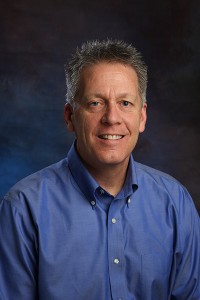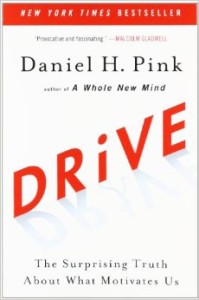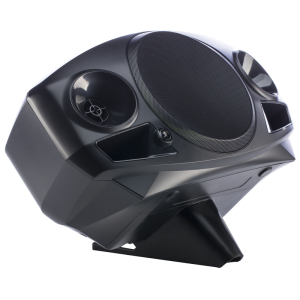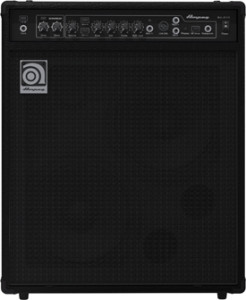Ears Behind the Gear: Larry Pendergrass — Engineering What’s Next for Mackie, Ampeg & More at LOUD Technologies
Behind every audio engineer, there’s an engineering exec like Larry Pendergrass.
In July, Pendergrass was named SVP of Engineering at LOUD Technologies, and now he has a lot on his shoulders. There are six brands under the pro audio conglomerate’s corporate umbrella, including Mackie and Ampeg — two names that every person who ever turned a pan pot or played a gig has burned into their brain.
Pendergrass’ job is about a lot more than just cranking standbys off the assembly line: Mackie, Ampeg, and their brother brands have to work harder than ever to maintain an edge, that advantage starts with the products, and the next products in the queue are being born under Pendergrass’ watch.
What is your role and primary responsibilities at LOUD?
I am the head of Engineering for the Music Gear division of Loud Technologies. This includes the brands Mackie, Ampeg, Crate, Alvarez, Blackheart and Tapco.
I am responsible for the engineering of new products. I work closely with my counterpart in Product Management (Strategic Marketing) along with his great team of product managers, aiding where I can in the selection of our product strategy, roadmaps and requirements.
You’re coming to LOUD with a lot of experience outside of the audio industry. What are some best practices that you’ve picked up at places like Hewlett Packard and Tektronix that will serve you well in this vertical?
I have been fortunate to work for great companies, and I am very grateful to many wonderful and brilliant business people and technologists that have shaped my thinking over the years. My career has taken me on a fascinating journey from electronic components, to medical imaging, to wired and wireless communications, and now to audio equipment. As a result, I bring experience in both business processes and technology that is relevant to the opportunities given and the challenges faced by Loud Technologies and other companies in the industry.
With respect to business processes, my work with each of these previous companies has been in high mix, lower volume, high-tech operations. The common theme is developing innovative products that differentiate in ways that customers value highly. Additionally, all of these companies share the need for a product development organization that can deliver products more rapidly and drive a higher cadence of product releases. This is critical to survive and thrive in the industry.
I believe I bring tools and methods that will make Loud Technologies faster, even more innovative and enhance its already stellar reputation as a clear standout in the industry for its new products. Some of these processes include a tight partnership with product marketing, strong customer interactions, rapid prototyping and alignment of product teams toward a clear customer-oriented goal. Additionally, I strongly favor motivation through well-chosen metrics as well as stories that remind our people of the purpose of their work. After all, our engineers are much like our customers: creators of and passionate lovers of music.
Additionally, we are seeing a technology inflection point in the industry, with more and more product innovation driven by software, firmware, digital signal processing and connectivity technology — both wired and wireless. My background in complex electronics systems as well as wired and wireless communications plays well into this technology trend.
What was appealing to you about going to LOUD at this stage in your career — what do you feel that they are they doing right, and why are they a good match for your talents?
Many of us who work in this industry do so first for the love of music. I have a personal collection of over 10,000 albums, spanning a range of genres that would surprise most people. Delivering products that aid in the creative process is a tremendously inspiring purpose. After all, purpose motivates and inspires.
Author Dan Pink has written a great book called Drive: The Surprising Truth About What Motivates Us. In it, he describes studies that point to the kind of environment we as leaders need to create in order to get the best out of creative people, or out of essentially anyone doing a job that requires cognitive reasoning. The answer is clear: create an environment offering autonomy, growing mastery and a compelling purpose. It is important to feel like your work has a strong purpose. For me, working at Loud Technologies inspires me because of the small part I can play in creating the music, the art I love.
Loud Technologies has a tremendous set of brands that it has strengthened over the years. I feel very proud to be a part of this unbroken chain of historical brands that are cherished throughout the world. My goal is to be true to these brands and to bring out the best of what people have loved about them for many years.
And what’s more, people have come to expect these brands to surprise them with stunning products that deliver superb value. I will keep fulfilling this expectation and turn it up a notch.
As an executive management consultant, your strengths included “strategy development, project portfolio management, engineering operations, M&A, and executive leadership development.” How do each of those skills come into play in your role at LOUD?
Right now I am focused on engineering operations. As it becomes clear that these operations are executing well to our plans, I aim to help in other areas.
There is a strong partnership between engineering and product management. It is tighter and more collaborative than ever before in our history. Working so closely together allows a greater pace of development and illustrates our commitment to leading edge tech that provides innovative solutions for our customers. We have a very talented team in place and my strategic development skills play well into the team dynamic.
Can you tell us about the products you’re working on, and what you expect to be developing in the future?
As you can imagine, we wouldn’t want to completely spoil the surprise. I can say that we are working on products to follow our very successful DL32R mixer. Recall that this is our 32-channel digital mixer that features complete wireless mixing from an iPad. The product has been well-received and we are working on extensions to gain an even greater hold in the market place.
We also recently had a tremendously successful release of our FreePlay product, a portable, battery-powerable personal PA system with quick and easy pairing and control with your iOS or Android device. There is much more, so readers will have to stay tuned for future announcements.
OK, we will! Next, can you explain where engineering fits into the product cycle for your company? When do you and your colleagues get involved with the product – what are you there to do, and not do?
Like most companies, we have a well-defined process for new product development. Common industry terminology for these phases include the Concept, Investigation and Development phases among others. The engineering organization is involved at every step of the way, beginning at product concept, though primary responsibility and contribution level will change throughout the process.
Our excellent team of product managers (strategic marketing) work with the engineering team to refine their ideas for the marketplace and then stay tightly connected as we work toward a product definition.
Throughout the project, the engineering team is coupled to its cross functional partners in manufacturing, strategic marketing, marketing communications and sales.
LOUD oversees two of the most well-known audio/MI brands there are, in Mackie and Ampeg. What do you think those two brands represent to consumers? How will your work be evolving or reinforcing the perception of those brands?
Mackie is well known to be an innovative brand that delivers superb quality, features and performance at a surprisingly affordable price. Mackie truly opens up applications for new users, with features and tech to please any pro. Whether we are talking about mixers, studio monitors, loudspeakers or recording gear, Mackie employees thrive on connecting with users and solving their problems. Mackie helps musicians, engineers, contractors and more realize there are solutions out there that are affordable.
And Ampeg? I guess the best way I can say it is “Ampeg is the Harley-Davidson of the instrument amplification market.” Ampeg has a sound that is unmatched and envied throughout the music industry. Just as the unique and clearly recognized thrum of the Harley-Davidson engine is a trademark of the brand, the warm sound of Ampeg’s unique designs has made it the favorite of bass artists for many years.
And our designers know that whatever they do to add more value to the customer, all of it would be for naught if they lost that sound. In my first week at Loud Technologies, I followed a delightful sound of a bass guitar riff out to a section in our manufacturing and quality control area at our WA state facility, to find one of our product marketing managers enjoying a personal jam session on a newly manufactured Ampeg bass amp. We know it would be a betrayal to our customers to lose that sound.
The engineering and marketing teams know all of this, believe it to their core and let it drive their decisions. Since many of the people in my engineering teams are musicians themselves, you can bet they have the musician and recording artists’ heart in mind at all times. I hope to reinforce this strongly over the coming years, and even amplify its meaning and perception with our customers.
Along those lines, what you think are the primary wants/needs of consumers in the pro audio and MI space currently?
People are really looking for flexibility in the gear they purchase. They often need solutions for a wide range of applications, especially as their career develops. They like new tools and new technology, as long as it truly solves a problem. Mackie has always done an excellent job staying on the cutting-edge of technology while ensuring the features implemented are valuable in the real world and that the gear comes in at the right price.
Our flagship products like the DL32R are designed to be extremely flexible. The pro audio community has recognized this and we are seeing DL32R solve tons of problems for this user. Utility can be a good thing. In the MI space, budget is often a major concern. However, people do not want to sacrifice features and want to grow into their gear. Mackie has always excelled at providing gear that’s a step above the competition at a great price.
Finally, what does the landscape look like right now to you in terms of product development in the audio industry? Put another way, why is this a particularly interesting time to be creating new tools for audio engineers and musicians?
The pace of new product needs in the marketplace is increasing, and competition is certainly not slowing. There are new entrants with very respectable products in addition to strong experienced players that would love to take some of our market share. We need to be fast, nimble and out-innovate our competition. While maintaining the great sound quality of our products, we need to deliver better and more intuitive user interfaces, greater flexibility for higher creativity and be first to give better value at lower prices.
Advancements in DSP have really been inspiring. We’re able to achieve things that simply weren’t possible in the past at affordable prices. This opens up features to customers that will drive their performance and music in the coming years. Wireless technology is also very interesting. We’ve seen this across the industry and it is certainly a driver for any product development team. Software is another great opportunity for any pro audio company. As more and more products involve software, creating interfaces that are intuitive, with smart workflow is something Mackie is committed to.
– David Weiss
Please note: When you buy products through links on this page, we may earn an affiliate commission.











